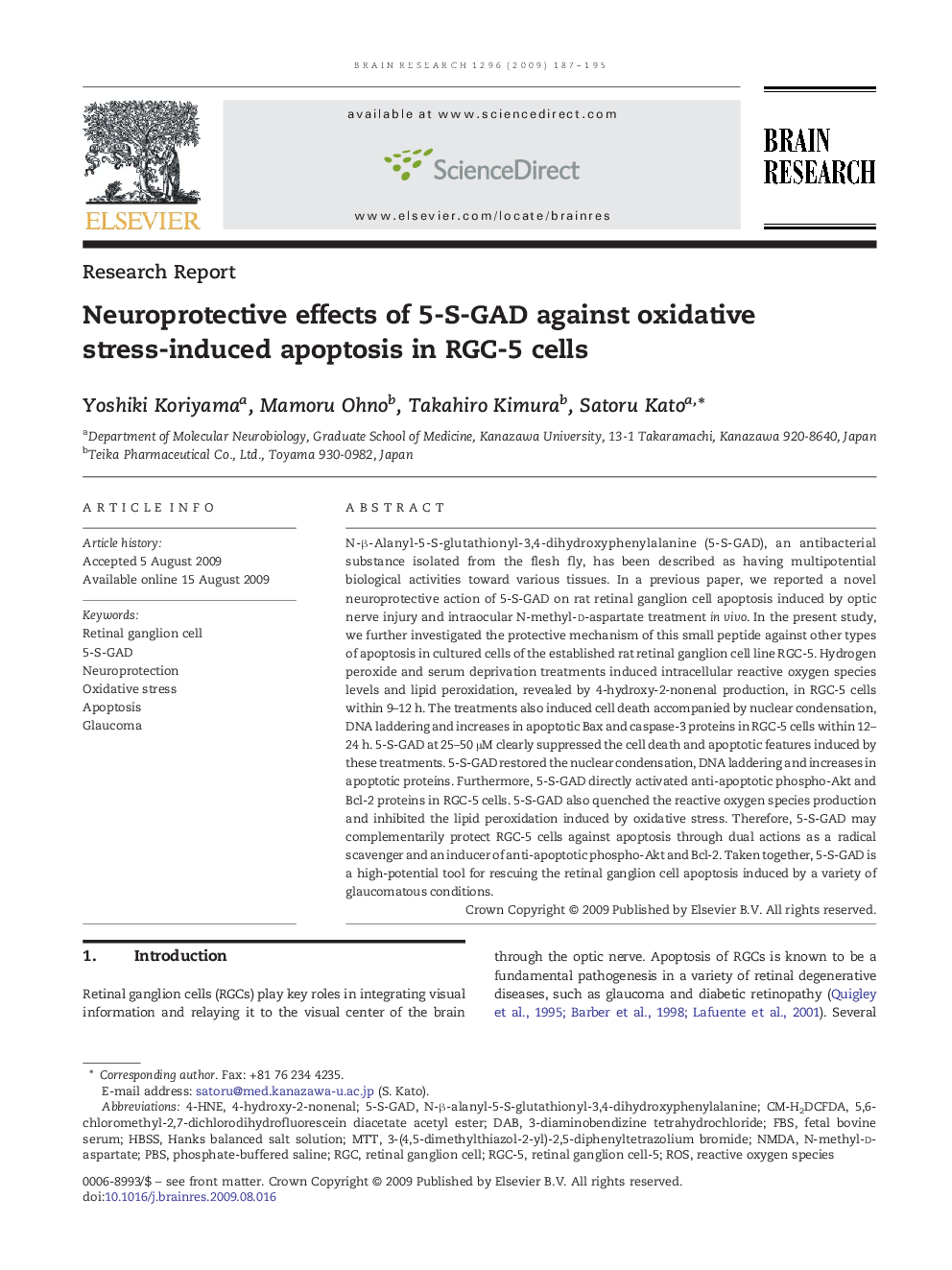| Article ID | Journal | Published Year | Pages | File Type |
|---|---|---|---|---|
| 4327874 | Brain Research | 2009 | 9 Pages |
N-β-Alanyl-5-S-glutathionyl-3,4-dihydroxyphenylalanine (5-S-GAD), an antibacterial substance isolated from the flesh fly, has been described as having multipotential biological activities toward various tissues. In a previous paper, we reported a novel neuroprotective action of 5-S-GAD on rat retinal ganglion cell apoptosis induced by optic nerve injury and intraocular N-methyl-d-aspartate treatment in vivo. In the present study, we further investigated the protective mechanism of this small peptide against other types of apoptosis in cultured cells of the established rat retinal ganglion cell line RGC-5. Hydrogen peroxide and serum deprivation treatments induced intracellular reactive oxygen species levels and lipid peroxidation, revealed by 4-hydroxy-2-nonenal production, in RGC-5 cells within 9–12 h. The treatments also induced cell death accompanied by nuclear condensation, DNA laddering and increases in apoptotic Bax and caspase-3 proteins in RGC-5 cells within 12–24 h. 5-S-GAD at 25–50 μM clearly suppressed the cell death and apoptotic features induced by these treatments. 5-S-GAD restored the nuclear condensation, DNA laddering and increases in apoptotic proteins. Furthermore, 5-S-GAD directly activated anti-apoptotic phospho-Akt and Bcl-2 proteins in RGC-5 cells. 5-S-GAD also quenched the reactive oxygen species production and inhibited the lipid peroxidation induced by oxidative stress. Therefore, 5-S-GAD may complementarily protect RGC-5 cells against apoptosis through dual actions as a radical scavenger and an inducer of anti-apoptotic phospho-Akt and Bcl-2. Taken together, 5-S-GAD is a high-potential tool for rescuing the retinal ganglion cell apoptosis induced by a variety of glaucomatous conditions.
